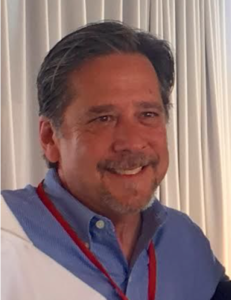Ohio’s opioid-abuse crisis has affected countless individuals and families, and long-term solutions have seemed elusive. In response, the state’s Department of Education and the Ohio STEM Learning Network (OSLN) called on schools to tackle the problem. Officials suggested a design challenge — a long-term project in which students research and propose resolutions to a real-world problem. But students at North High School in Akron Public Schools in Summit County were already at work, digging up data, doing interviews and brainstorming solutions. To find out more, we contacted the district’s Sam Crews, a 20-year educator and founding staff member of the National Inventors Hall of Fame STEM School. He also manages OSLN’s Akron Hub Training Center:

Q: What prompted students at Akron’s North High School to look into the problem of rampant opioid use?
A: The 10th-grade teachers at North have been implementing problem-based learning since being trained at the Akron OSLN hub. As they moved into the 2016 school year, the opioid epidemic presented itself as an authentic, real-time issue that they designed their unit around. All of this came before state School Superintendent Paolo DeMaria and OSLN issued a call for design challenges on this topic.
Q: How did the students research the problem?
A: The teachers developed a three-phase, problem-based learning unit in conjunction with the Summit County Opiate Task Force.
First, the task force came to the high school to “roll out,” or present, the problem to learners. Learners then developed collaborative teams to begin their research based on what they knew and what they needed to find out.
In the second phase, the task force brought out primary source experts for learners to receive information from the perspectives of the courts, first responders and prevention specialists.
Last, the task force came out to listen to solution proposals from the students during a presentation of learning.
Q: Some of the students presented their conclusions and proposed solutions in a public forum. Tell us about that.
A: The task force invited two of the student groups to present at its quarterly meeting on December 14, 2016, at the Summit County Public Health auditorium in Akron.
One group designed a concept around “safe houses.” The focus of this idea revolved around the safe harbor of children and other family members affected by someone using heroin or prescription opiates. The students identified many wraparound services the safe house would provide, including counseling, educational support and hotline services.
The other group, citing a six- to seven-week waiting list for local, affordable treatment for those addicted to opioids, identified a drastic need for more treatment options.

It never ceases to amaze me how well students do when they take ownership of their learning. The key for me in listening to problem-based learning presentations is how conversational students become when relating to an expert. The evidence of learning is undeniable.
Q: How have the students benefited from working on this project?
A: In an interview I did with the kids the day after their presentation, they all talked about feeling like they had made a difference in the community and how amazing that feeling was.
Problem-based learning is a driver of this kind of powerful learning where students feel valued and they are invested in an outcome that demonstrates hard work, collaboration and the gathering of knowledge that leads to solution making. For many of these kids, this opportunity represented their first attempt at real civic engagement.
Q: Would you recommend other schools take up this challenge?
A: What I learned from these now-expert students is that Ohio, in particular, is becoming overwhelmed by this epidemic on many fronts, some that I wouldn’t have thought of.
I also believe in the power of young people who, when challenged, become excellent problem solvers. So, yes, I encourage any school or team of teachers to let their students contribute!
Interview
Sam also sat down with the students and recorded a brief interview with them. Be sure to take a listen and here about what they learned, in their own words.
Edited by Patricia Bitler, freelance writer and editor.